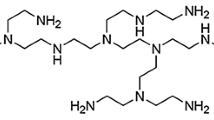Abstract
The objective of this research was to provide in vitro transport data designed to clarify the relative importance of permeability increase and electroosmotic flow in flux enhancement via iontophoresis, Iontophoretic fluxes were measured with both anode and cathode donor cells, and passive fluxes were measured both before iontophoresis (Passive 1) and after iontophoresis (Passive 2). Data were generated for three uncharged low molecular weight solutes (glycine, glucose, and tyrosine) and two high molecular weight anionic species (carboxy inulin and bovine serum albumin). Flux enhancement is greater for anodic delivery than for cathodic delivery, even for the negatively charged molecules, and anodic flux of glucose decreases as the concentration of NaCl increases. Both observations are consistent with a mass transfer mechanism strongly dependent on electroosmotic flow. Steady-state anodic flux at 0.32 mA/cm2, expressed as equivalent donor solution flux (in µl/hr cm2), ranged from 6.1 for glycine to about 2 for the large anions. As expected, iontophoretic flux is higher at 3.2 mA/cm2 than at 0.32 mA/cm2, and passive flux measured after iontophoresis is about a factor of 10 greater than the corresponding flux measured before the skin was exposed to electric current. There are two mechanisms for flux enhancement relative to passive flux on “fresh” hairless mouse skin: (1) the effect of the voltage in increasing mass transfer over the passive diffusion level, the effect of electroosmotic flow dominating this contribution in the systems studied in this report; and (2) the effect of prior current flow in increasing the “intrinsic permeability” of the skin. Both effects are significant. Based on theoretical results given elsewhere, theoretical values for flux were calculated and compared with the experimental data. While agreement between theory and experiment was only qualitative in several cases, most of the data are predicted quantitatively by the theory.
Similar content being viewed by others
REFERENCES
M. J. Pikal. Pharm. Res. 7:118–126 (1990).
M. J. Pikal and S. Shah. Pharm. Res. 7:213–221 (1990).
R. Burnette and D. Marrero. J. Pharm. Sci. 75:738–743 (1986).
R. Burnette and B. Ongpipattanakul. J. Pharm. Sci. 76:765–773 (1987).
L. Gangarosa, N. Park, C. Wiggins, and J. Hill. J. Pharmacol. Exp. Ther. 212:377–381 (1980).
R. R. Burnette and T. M. Bagniefski. J. Pharm. Sci. 77:492–497 (1988).
C. R. Cantor and P. R. Schimmel. Biophysical Chemistry, Part I, W. H. Freeman, San Francisco, 1980.
P. L. Altman. In D. S. Dittmer (ed.), Biological Handbooks: Blood and Other Body Fluids, Federation of American Society for Experimental Biology, Washington, D.C., 1961 p. 47.
N. Lakshminarayanaiah. Chem. Rev. 65:491–565 (1965).
Y. C. Chang and A. S. Myerson. AIChE J. 32:1567–1569 (1986).
J. K. Gladden and M. Dole. J. Am. Chem. Soc. 75:3900–3904 (1953).
J. Duclaux, W. Zasepa, and A. Dobry-Duclaux. J. Chim. Phys. 63:669–674 (1966).
R. C. Lanman, J. A. Burton, and L. S. Schanker. Life Sci. 10 (part 2):803–811 (1971).
K. H. Keller, E. R. Canales, and S. I. Yum. J. Phys. Chem. 75:379–387 (1971).
G. Manning. Annu. Rev. Phys. Chem. 117–140 (1972).
J. C. Keister and G. B. Kasting. J. Membrane Sci. 29:155–167 (1986).
H. Rein. Z. Biol. 81:125–140 (1924).
Author information
Authors and Affiliations
Rights and permissions
About this article
Cite this article
Pikal, M.J., Shah, S. Transport Mechanisms in Iontophoresis. III. An Experimental Study of the Contributions of Electroosmotic Flow and Permeability Change in Transport of Low and High Molecular Weight Solutes. Pharm Res 7, 222–229 (1990). https://doi.org/10.1023/A:1015809725688
Issue Date:
DOI: https://doi.org/10.1023/A:1015809725688



